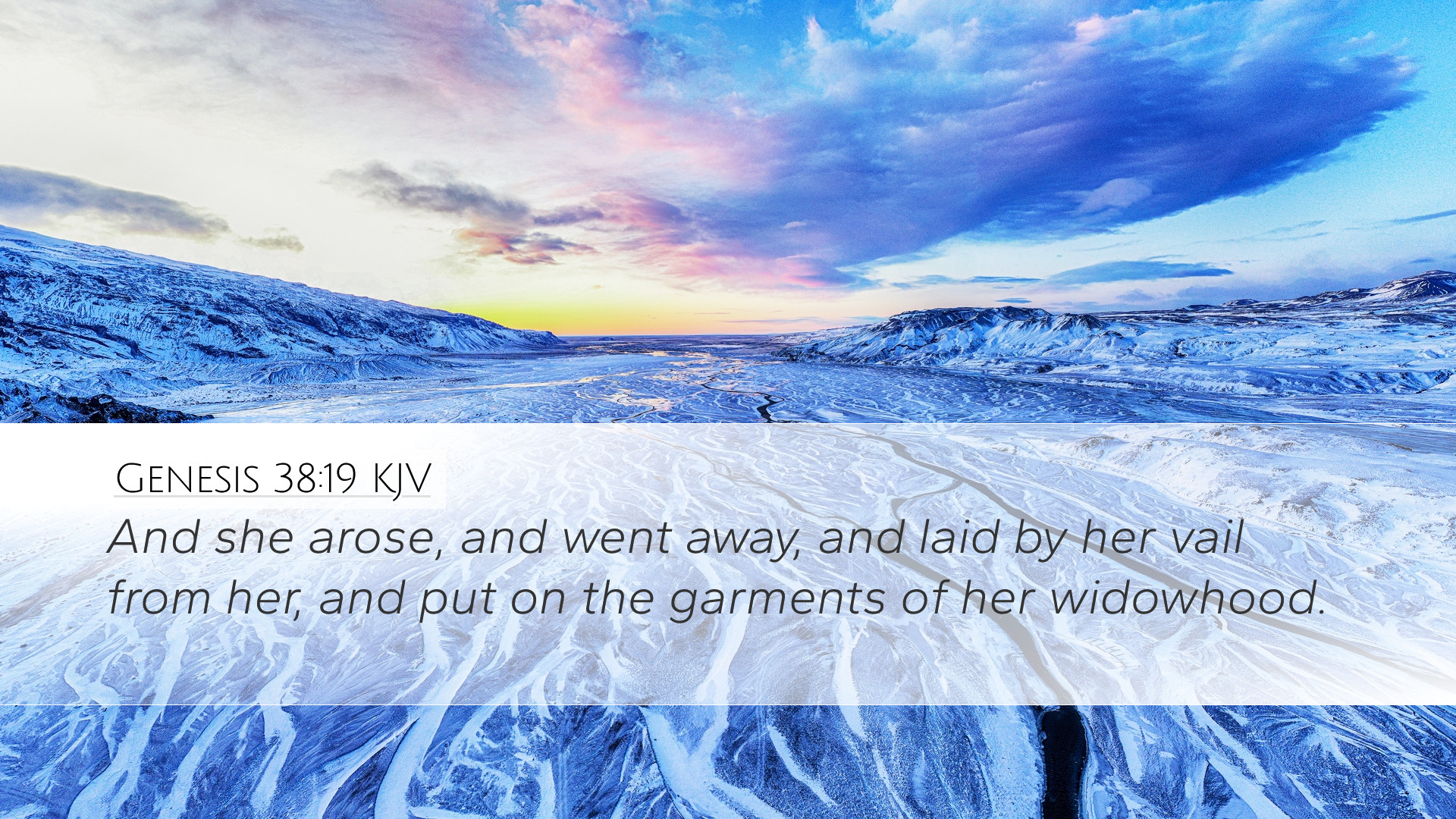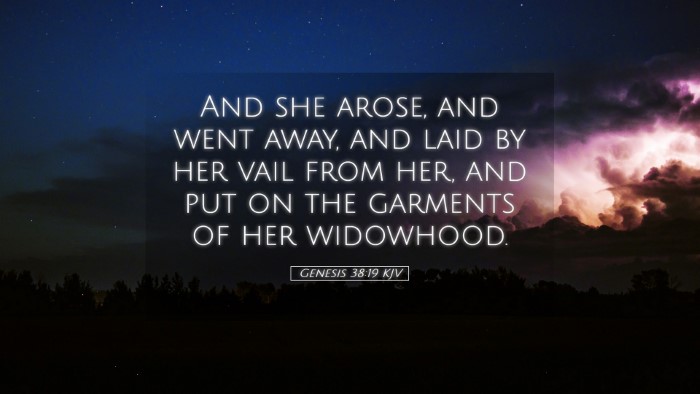Commentary on Genesis 38:19
Verse Reference: Genesis 38:19 (KJV) - "And she arose, and went away, and laid by her veil from her, and put on the garments of her widowhood."
Contextual Overview
This verse is located within the narrative of Judah and Tamar, which forms a critical episode in the genealogical history of Israel. After the death of Judah's sons, Er and Onan, Tamar is left in a situation where her rights are jeopardized. In seeking to fulfill her duty toward the family line, she resorts to a bold act of deception. In this context, the verse captures a pivotal moment of transition for Tamar as she shifts from the disguise of a widow to the outward sign of her pagan deception.
Insights from Public Domain Commentaries
Matthew Henry's Commentary
Matthew Henry emphasizes the moral implications of Tamar's actions, focusing on her determination and resourcefulness. He notes that her decision to disguise herself was a desperate yet calculated act to secure her rights after having been wronged by Judah. Henry points out that Judah’s failure to fulfill his duty as a father-in-law illustrates the severity of personal responsibility within family relations in biblical times. Furthermore, Henry reflects on the broader implications of Tamar’s actions within the divine narrative that leads to the lineage of Christ. He stresses the providential hand of God in guiding the events that seem morally ambiguous.
Albert Barnes' Commentary
Albert Barnes offers a more detailed analysis of the sociocultural implications surrounding Tamar’s actions. He explains that in the ancient Near Eastern context, a widow without offspring was seen as vulnerable and without status. Barnes discusses the importance of the "veil" as a symbol—representing a woman's status—where its removal signifies a drastic change. The act of putting away her veil indicates Tamar's transition from widow to an agent of her own destiny. Barnes highlights that this was not merely an act of seduction but a strategic move that reflects deeply on the societal customs of the time and the importance of lineage and inheritance.
Adam Clarke's Commentary
Adam Clarke provides a linguistic examination of the Hebrew terms used in this verse, shedding light on the connotations of ‘veil’ and ‘garments of widowhood.’ He notes that these garments were not just functional but also deeply symbolic, representing mourning and loss. Clarke also discusses the duality of Tamar’s identity and the complexities she embodies—both as a widow and as a woman acting in defiance of patriarchal norms to assert her rights. He explores how her actions, though controversial, serve a greater purpose in God’s redemptive history and how she is ultimately woven into the very fabric of the lineage that leads to David and eventually to Christ.
Theological Reflections
The story of Tamar acts as a reflection of the interplay between human agency and divine sovereignty. Each commentator underscores how Tamar, in her plight, demonstrated not just desperation but also faith in carrying on the family line. Her actions, though morally complex, showcase the lengths to which individuals may need to go to fulfill divine purposes, even amid societal failures. This narrative invites reflection on themes of justice, forgiveness, and the complexities of human relationships within the covenant community.
Key Themes
- Agency and Deception: Tamar’s actions represent a bold assertion of agency against societal constraints.
- Familial Responsibility: Judah’s neglect of his duties leads to significant personal and communal consequences.
- God's Providence: The lineage of Christ is intricately connected to unexpected figures, illustrating God's overarching plan.
- Moral Ambiguity: The story highlights the complexity of moral choices when societal norms conflict with personal rights.
Conclusion
Genesis 38:19 serves as a rich text for exploration on multiple levels. Engaging with the insights from Henry, Barnes, and Clarke reveals not only the near historical and cultural layers but also the theological implications intrinsic to the text. For pastors, students, theologians, and scholars, this verse can serve as a springboard for discussions around justice, cultural norms, and divine providence, ultimately leading back to the heart of scripture: the redemptive work of God through unexpected means.


